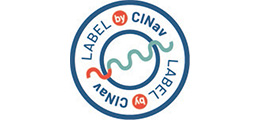Energy and control
First Axis of the Energy and Embedded Systems for Transport Division Department: Energy and Control
Objectif
To optimize embedded mechatronic systems in transport under multi-physical constraints (cost, volume, weight, efficiency, thermal, reliability, etc.) with specific focus on improving the efficiency of storage systems by developing source hybridization solutions and new on-board energy management methods.
Examples of Applications
Hybrid/electric vehicles, all-electric and more-electric aircraft, drones, soft mobility systems: electric bikes, electric scooters.
Areas of Research
The goal of this topic is to develop methods to design embedded mechatronic actuation chains based on optimization under multi-physical constraints. A “typical” mechatronics chain consists of an energy source, a static power electronic converter and an electrical actuator driving a mechanical load (e.g. electrical propulsion chain, electrical flight controls, air shutter, etc.)
The considered constraints considered include size (or volume), weight, cost, efficiency, thermal, electromagnetic compatibility, control and command and reliability. This methodology makes use of different levels of multi-physical models and needs to efficiently manage very different time and space scales, taking into account the integration of the mechatronic system in a method mean of transport and its integration in a wider environment of mobility.
Considerable effort is made in this multi-physical design approach to the storage and management of on-board energy via the study of electrical and thermal behavior and aging (lifespan) of embedded sources. Particular attention is paid to the hybridization of sources (battery-supercapacitors, battery-battery, battery-fuel cells etc.) with a view to improving the efficiency performances of the storage system. Such improvements are made possible by overall optimization and the use of new energy management methods that can reduce the constraints on the main energy source. Understanding the behavior of storage systems thus enables us to include reliability from the initial design phase using suitable management methods.
This design and optimization approach is backed up by considerable experimental validation resources (storage system characterization and cycling test benches, energy management and hybridization test benches, electric vehicle benchesplatform, tricycle with electrical assistance, etc.).
Command Control and Diagnosis of Systems Diagnosis
Objective
To develop the intelligence of transport systems, predict the appearance of faults and ensure continuity of service by elaborating supervision, diagnostic diagnosis and robust control command strategies.
Examples of Applications
Driving delegation, driverless autonomous vehicles, electric vehicles, more-electric aircraft, autonomous drones, driverless trains.
Areas of Research
The design of mechatronic activation chainssystems and the optimization optimized of on-board energy management of on-board energy require the development of supervision, diagnostic diagnosis and advanced command control strategies to optimize the dynamic performances of systems, predict the appearance of faults and ensure continuity of service, especially for critical applications.
In the Command Control and Diagnosis of Systems Diagnosis departmenttopic, we especially look at developing new robust and fault-tolerant control architectures (for energy sources, electrical actuators, static converters, etc.), and activation actuation chains especially in electric/hybrid vehicles and more-electric aircraft.
The development of diagnostic diagnosis techniques is a crucial stage in our approaches (Fault Tolerant Controls) to predict and detect the appearance of faults. This step precedes the elaboration of a command control law that can ensure stability with acceptable vehicle performances in normal mode and in degraded mode for a given mission profile.
Experimental validation is carried out on several activation test benches of varying powers using different technologies of electric machines (synchronous machine, induction machine, switch reluctance machine).














